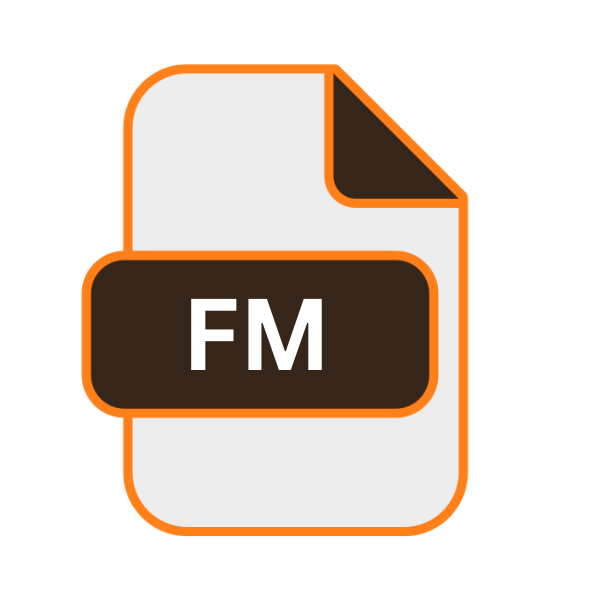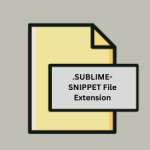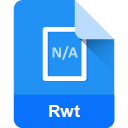.FM File Extension

FrameMaker Document
| Developer | Adobe Systems |
| Popularity | |
| Category | Page Layout Files |
| Format | .FM |
| Cross Platform | Update Soon |
What is an FM file?
.FM files are the native file format used by Adobe FrameMaker, a powerful desktop publishing application. These files contain text, images, formatting, styles, and other elements necessary for creating professional-quality documents such as books, manuals, and reports.
FrameMaker is particularly well-suited for producing lengthy documents with complex structures and extensive cross-referencing.
More Information.
FrameMaker was first released in 1986 by Frame Technology Corporation. It was designed to address the needs of technical writers and publishers who required a tool capable of managing large documents with complex formatting requirements.
FrameMaker quickly gained popularity for its robust feature set, including advanced page layout capabilities, support for multiple output formats, and powerful template systems.
The .FM file format was created to store all the elements of a FrameMaker document, including text, graphics, styles, and metadata.
This format enabled users to save and share their work efficiently, ensuring that all document components were preserved accurately.
Origin Of This File.
The .FM file format was developed by Frame Technology Corporation, which was later acquired by Adobe Systems. The primary aim was to provide a robust platform for technical writing and desktop publishing that could handle large documents with ease.
This format has been refined over the years to support advanced features and integrate with other Adobe products, making it a staple in the publishing industry.
File Structure Technical Specification.
The .FM file format is proprietary to Adobe and is specifically tailored to support the features of FrameMaker. While the exact internal structure of .FM files is not publicly documented, they are known to encapsulate various elements:
- Text Content: The primary textual data of the document.
- Graphics and Images: Embedded graphical elements, which can include vector graphics, images, and illustrations.
- Formatting and Styles: Information about paragraph styles, character styles, and page layouts.
- Metadata: Document properties, author information, and other metadata.
- Cross-references and Indexes: Links and references within the document.
How to Convert the File?
To convert .FM files to other formats, you typically need access to Adobe FrameMaker. Here are the common conversion options:
- PDF: Convert directly within FrameMaker using the “Save as PDF” option.
- HTML/XML: Use the “Save As” or “Export” features in FrameMaker to create web-compatible files.
- RTF/Word: Export to Rich Text Format (RTF) or Microsoft Word for compatibility with word processing applications.
- EPUB: For eBook creation, FrameMaker supports exporting to EPUB format.
Advantages And Disadvantages.
Advantage:
- Robust Handling of Large Documents: FrameMaker excels in managing large, complex documents, making it ideal for books, manuals, and technical guides.
- Advanced Formatting Capabilities: The software offers sophisticated page layout options and extensive styling tools.
- Multi-Platform Support: FrameMaker can generate output in various formats, including PDF, HTML, and XML.
- Rich Feature Set: Features like conditional text, cross-references, and automated indexing enhance productivity.
Disadvantage:
- Proprietary Format: The .FM file format is proprietary, which can limit compatibility with non-Adobe software.
- Cost: Adobe FrameMaker is a premium product, which may be cost-prohibitive for some users.
- Learning Curve: The software’s extensive feature set can be overwhelming for new users.
How to Open FM?
Open In Windows
- Adobe FrameMaker: The primary application for opening and editing .FM files.
- Adobe Acrobat: If converted to PDF, the document can be viewed in Acrobat.
- Third-Party Viewers: Some third-party tools might offer limited viewing capabilities, but editing will require FrameMaker.
Open In Linux
- Wine: Install FrameMaker through Wine, a compatibility layer that allows running Windows applications on Linux.
- Conversion: Convert .FM files to a more Linux-friendly format (e.g., PDF) using FrameMaker on Windows before transferring them to Linux.
Open In MAC
- Adobe FrameMaker: Run FrameMaker on macOS using virtualization software like Parallels or VMware Fusion, as there is no native macOS version.
- Conversion: Convert .FM files to PDF or another format that can be easily opened on macOS.
Open In Android
- Adobe Acrobat Reader: If the .FM file is converted to PDF, it can be viewed on Android devices using Adobe Acrobat Reader.
- Cloud Services: Use cloud-based services to convert and access .FM files from FrameMaker before viewing them on Android.
Open In IOS
- Adobe Acrobat Reader: View converted PDF files on iOS devices.
- Cloud Services: Similar to Android, use cloud-based services to convert and access .FM files.
Open in Others
For other platforms or devices, the best approach is typically to convert .FM files to a widely supported format like PDF. This ensures compatibility and ease of access across different systems.













